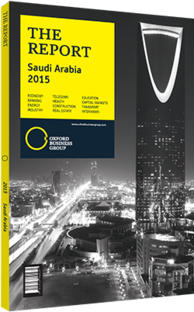Saudi Arabia taps capital markets to provide additional coverage for the 2015 budget deficit
The recent return to the bond market by Saudi Arabia marks a significant shift in government policy, as the world’s biggest oil exporter taps capital markets to cover budgetary shortfalls and balance drawdowns of foreign reserves. The SR15bn ($4bn) issue in mid-July 2015 was the first sovereign bond offered by the Kingdom since 2007, with senior officials hinting at further forays into the market. The bonds – seven- and 10-year conventional issues with yields of 2.57% and 2.88%, respectively – were sold to quasi-sovereign Saudi institutions, according to press reports.
The bond issue coincides with the first projected budget deficit since 2009, prompted by weaker oil revenues and sustained outlays on capital works and investment programmes. Earnings from crude exports could decline further, with shipments down 10% in May 2015 despite near-record production, according to official data released on July 20. Exports in May were the lowest in five months, averaging 6.94m barrels per day (bpd), down 800,000 bpd from the previous month. Saudi Arabia hopes to close some of this gap by boosting sales of domestically refined oil products, notably diesel, with the country now tied with Royal Dutch Shell as the fourth-largest refiner in the world.
Development Costs
Ample oil revenues have traditionally financed state spending, with Saudi Arabia allocating SR4.4trn ($1.2trn) for development projects in the past five years alone, according to data from the Saudi Arabian Monetary Agency (SAMA). While public spending accounted for 40% of GDP in 2014, totalling around SR1.1trn ($293.3bn), public debt levels eased to 1.6% of GDP and foreign reserves stood at 97% of GDP, putting the Kingdom in good stead to seek debt financing with its recent issue.
According to Fahad Al Mubarak, governor of SAMA, the bond will provide additional coverage for the 2015 budget deficit, which he told local media was expected to far exceed the projected SR145bn ($38.7bn). A mix of foreign reserves and bond issues would be used to meet the shortfall, he explained, with SR244bn ($65.1bn) in reserves withdrawn during the first half of 2015. Though SAMA has not indicated a timeline for further bond issuances, Fahad Alturki, chief economist at Jadwa Investment, told local media the country could be looking to borrow up to SR200bn ($53.3bn).
Analysts see a number of positives in the policy shift towards higher debt levels, particularly given the Kingdom’s low debt exposure at present.
John Sfakianakis, Middle East director for fund manager Ashmore Group, said the initial step into the bond market, and the ones that are flagged to follow, would serve to broaden Saudi Arabia’s capital market, setting benchmarks for future issues and paving the way for the private sector to offer bonds when looking to raise capital. “In general, regulators want to encourage companies to issue bonds as alternatives to bank loans, which currently dominate corporate fundraising,” he told OBG. “This would spread corporate risk beyond the banking system, making the financial sector more healthy as a whole, while also providing channels for a growing investment industry.” While the first bond offering was on a limited subscription to government and semi-government funds, it is likely that further issues will target a broader market, providing Saudi banks with long-term investment outlets.
Credit Positive
Saudi Arabia’s strong credit profile should allow it to raise debt fairly easily, according to a Jadwa Investment report. “The government is now expected to issue debt as part of its deficit financing strategy. This change of strategy comes as the Kingdom takes advantage of its solid credit profile, which has been affirmed by the major rating agencies,” the report noted. Saudi Arabia has maintained its “AA-” credit rating from Standard & Poor’s (S&P) amidst downgrades for other oil-producing nations, though its outlook was revised to negative in February 2015, with S&P citing the country’s dependence on oil revenues.
Efforts to diversify the economy and boost non-oil growth could help to assuage these concerns, as corporate debt issues fund private sector expansion.
You have reached the limit of premium articles you can view for free.
Choose from the options below to purchase print or digital editions of our Reports. You can also purchase a website subscription giving you unlimited access to all of our Reports online for 12 months.
If you have already purchased this Report or have a website subscription, please login to continue.

